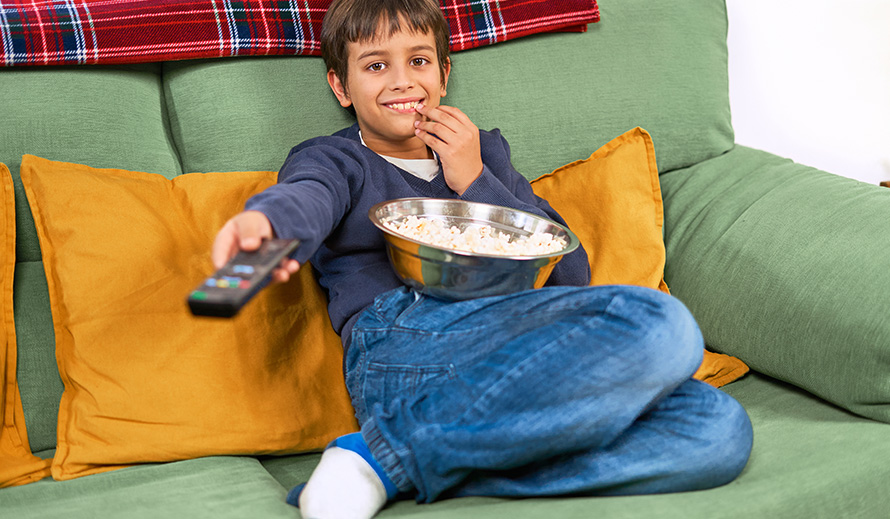From snarky insults to curse-fests to mockery of religious devotion, many satirical --or simply crude-- adult-oriented cartoons in the TV universe contain content that's not healthy for impressionable children. So parents vigilantly research and screen any questionable cartoons and censor on the side of caution to protect their innocence--regardless of whether your child's 8-year-old friend at soccer camp loves South Park.
See for Yourself: Many wholesome children's cartoons delight, entertain and educate. But All Pro Dad ranks adult cartoons in its Top Ten Things Not to Let Your Children Watch. "Animation does not mean child-friendly. There are adult cartoons that are extremely inappropriate for child audiences. These cartoons often contain bad language and sexual imagery."
So monitor consumption and ban on those with a cornucopia of nudity, violence, sexual innuendo and offensive language. While streaming content is not rated, parents can use the TV rating system and program the V-Chip in the TV to display only appropriately rated shows. Nemours KidsHealth explains, "These rating are listed in TV guides and local listings and on the screen in your cable program guide. They also appear in the upper left corner of the screen during the first 15 seconds of tv programs."
"The best way to monitor media that kids use is to experience the media yourself," it states. "Watch what they watch so you can talk about what they see on their screens. You know your kid best, so you're the best judge of what they can handle."
American Academy of Pediatrics' article on age-appropriate media advises to pre-screen before letting the child watch a show. "Whatever media your child is using should be age appropriate. If possible, it should also reinforce your family's values."
Do Your Homework: AAP recommends parents check ratings, reviews and discussion suggestions on Common Sense Media. For teens already watching cartoons like South Park, Common Sense suggests asking children to analyze what point creators are trying to make underlying crass jokes and whether the over-the-top content detracts from it--or is appropriate to joke about.
AAP's article on virtual violence also notes its harm to children. "Decades of research link virtual violence to aggressive thoughts, feeling and actions in children...Newer studies show that exposure to virtual violence can trigger mental health struggles, including depression and anxiety."
Even with a violent scene in a child's cartoon, the article advises parents to discuss the value of working through anger and resolving differences without violence. "These conversations compare what your child is seeing with our family's values such as respect, tolerance, kindness and mutual understanding."
Prone to Imitate: Emily Tsiao in Plugged In laments her middle school bus rides where boys would quote South Park and use it to harass "everyone unfortunate to cross their path." She argues such cartoons, which originated with The Simpsons, are inappropriate for even teens in their "equal opportunity mockery of race, gender, disability, addiction, abuse, depression, suicide, politics and religion." "While some fans might praise a given show's satire or multi-layered wit, let's face it: Many viewers engage with these shows on the level of my juvenile bus mates. They laugh at the foul language and animated nudity and gross-out jokes...Perhaps instead of letting these types of shows play in the background when we cook dinner, we could change the channel or even turn the TV off."
Stand for Affirmative Animation: Wellspring Center for Prevention gives advice for Helping Kids Combat Peer Pressure who might feel left out for not watching a parent-disapproved cartoon. It recommends setting clear limits regarding digital usage and helping them practice "refusal skills" as needed. Help them develop healthy self-worth through positive self-talk, pursuit of interests and opportunities for achievement. Create a supportive environment where children feel comfortable talking about their experiences and help them handle conflict in a healthy way to navigate social situations with confidence. "Have conversations with them that focus on how to choose friends, how to make healthy choices, and who is in their support system if they need someone to talk to," it states. "Emphasize your family values and work to provide a safe and secure environment for your child."

